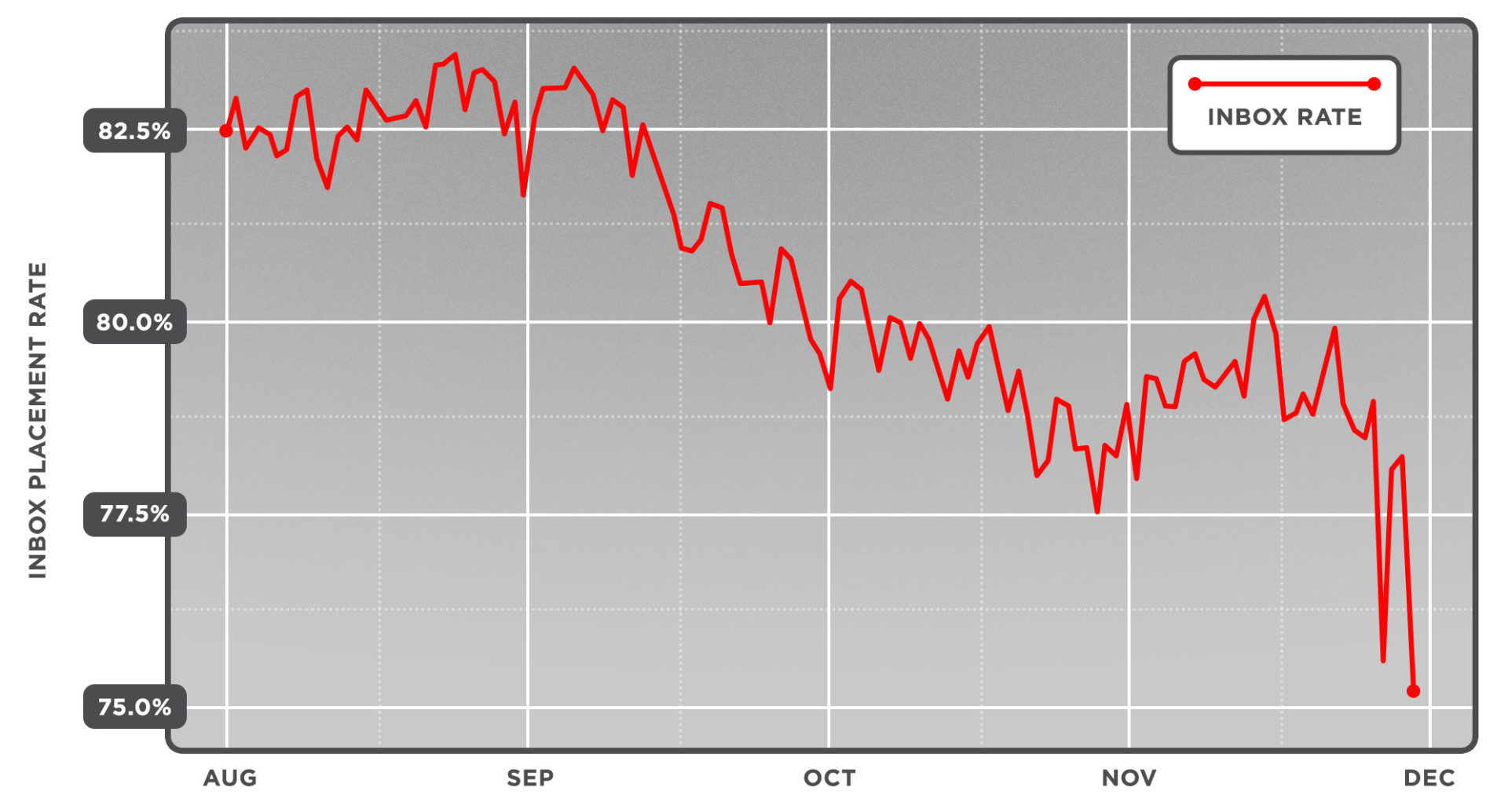Source: ReturnPath
The graph below shows the average inbox placement for messages sent to 1.4 million live Gmail users from August 1, 2016, to November 28th, 2016.

Whelp. Let’s let that sink in.
We’re seeing three things going on:
- A steady drop of about 4-5 percent from September to the end of October
- A small recovery until mid-November
- Another drop of 2-3 percent for Black Friday and Cyber Monday
Let’s explore #1 and #3 a bit further:
September to October 2016:
Due to the slow and steady decline, we are going attribute this drop in inbox placement rate on changing algorithms on Gmail’s side to catch spam. As senders, we can complain all we want. But Gmail will only pull back on the mechanics of their filtering algorithms if their users begin to complain. If Gmail doesn’t hear any complaints from their users, that probably means the emails they’re sending to the spam folder are probably contributing to a cleaner, simpler inbox. If your emails are going to the spam folder, even if you’re not a “spammer” you may need to take a critical look at your email program to make sure that the emails you’re sending are wanted, relevant, and timely. The flip side of this is—if your emails are garnering positive engagement (strong opens, replies, “this is not spam” reports, etc.), Gmail will work to ensure your emails end up in the inbox.
In summary: Even if you’ve had a positive history with Gmail, you may want to take another look at your Gmail performance metrics to ensure you haven’t been caught in this tide of emails ending up in the spam folder. If you are seeing a drop in Gmail opens and inbox placement, here’s a link to Gmail’s resources for senders to get you started.
Black Friday and Cyber Monday 2016:
This outage was more straightforward. We found that it correlated with spikes in volumes on both Black Friday and Cyber Monday. This was in part due to senders mailing further back into their list and more frequently, and also in part to malicious spammers and spoofers coming out of the woodwork to take advantage of the shopping frenzy.
Here is a summary graph showing the average number of emails our Gmail subscribers were receiving on a daily basis:

As we wrap up for the year, it will be interesting to see how quickly Gmail will recover, and how much it will recover.
Here are some quick checks and considerations to make sure you’re in the best position for Gmail:
- Ensure your emails have TLS encryption
- Ensure you have proper authentication setup: DKIM, SPF, and DMARC
- Ensure you have a clear (and functioning) unsubscribe link in the body of your emails, as well as in the email header
- Review your acquisition practices to minimize low-quality addresses from coming through, as well as properly setting up subscriber expectations upon signup
- Know your subscriber: Adjust sending frequency and content based on information you have access to

